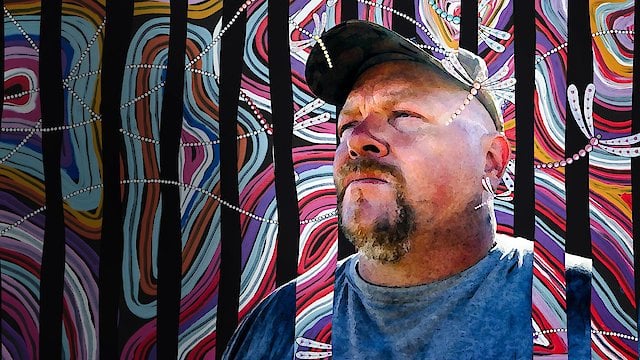
The Art of Incarceration
Where to Watch The Art of Incarceration

The Art of Incarceration is a poignant and powerful documentary film released in 2021, which delves into the complex realities of the Aboriginal experience within the Australian prison system. Through a unique blend of storytelling, art, and personal narratives, this film invites viewers to engage with the often-overlooked voices of Indigenous Australians impacted by incarceration.
At the heart of the documentary is the compelling work of various Aboriginal artists who use their creativity to reflect on their experiences, emotions, and the systemic challenges they face. With the backdrop of Australia’s fraught history regarding its Indigenous populations, the film brings to light the intersection of art and social justice, while exploring themes of identity, resilience, and cultural heritage.
The film features an impressive cast, including acclaimed actor and activist Jack Charles, who not only brings depth to the narrative but also shares his own journey—a journey marked by struggles against the backdrop of a society that has often marginalized Indigenous voices. Charles's contributions to the film highlight the power of art as a means of healing and a tool for social change. His charisma and conviction resonate throughout, drawing the audience into a deeper understanding of the cultural implications of incarceration.
Robby Wirramanda, another significant figure in the film, enriches the narrative with his perspective, illustrating the impact of systemic injustices on individual lives. His experiences and reflections underscore the necessity for change and the importance of recognizing and amplifying Aboriginal voices. Wirramanda's art serves as a medium of expression, shedding light on both personal and collective histories, revealing the depth of emotion that often accompanies such narratives.
Christopher Austin, the third notable personality in the film, adds yet another layer to its multifaceted approach. His contributions to the artwork and discussions highlight the role of community and the significance of collaboration among Indigenous artists. Together, these three prominent figures engage in honest conversations about their experiences, weaving their personal stories into a broader dialogue about the status of Aboriginal people within Australia's criminal justice system.
The film not only showcases the artistic talents of its subjects but also serves as a profound commentary on the cultural ramifications of colonization. Through interviews, artistic expression, and archival footage, The Art of Incarceration examines the historical context that has led to the overrepresentation of Aboriginal people in prisons. By situating individual stories within this larger framework, the documentary prompts viewers to reflect on the long-lasting effects of colonial policies and the ongoing struggle for justice and recognition.
The cinematography is striking, with visuals that capture both the vibrant art created by the featured artists and the stark realities of incarceration. The juxtaposition of beauty and hardship serves to emphasize the resilience of the Indigenous culture in the face of adversity. The film uses these visual elements effectively, allowing the audience to experience the emotional weight of the stories shared while simultaneously appreciating the beauty of Indigenous expressions through art.
Accompanying the visuals, the soundtrack complements the film’s themes beautifully, utilizing traditional Aboriginal music as well as contemporary pieces that resonate with modern struggles and triumphs. This auditory landscape enhances the immersive experience, enveloping viewers in the rich cultural tapestry woven throughout the documentary.
Throughout its runtime, The Art of Incarceration maintains a respectful and empathetic tone, inviting audiences to engage with the stories of those affected by incarceration without sensationalizing their experiences. Rather than portraying the individuals as mere victims, the film emphasizes their strength, creativity, and potential for transformation. This nuanced approach encourages a thoughtful examination of the social constructs surrounding crime and punishment, particularly in relation to marginalized communities.
As the film unfolds, viewers are prompted to consider their own perceptions of justice, identity, and community. The powerful testimonies and artistic expressions showcased evoke empathy and understanding, challenging stereotypes while fostering a dialogue about the necessary steps toward reconciliation and healing for both individuals and society as a whole.
The Art of Incarceration is ultimately a celebration of resilience and a call to action, urging viewers to acknowledge the legacies of colonization and to advocate for systemic change. It serves as a vital reminder of the importance of art as a catalyst for social change, showing how creativity can empower individuals and communities in their fight against injustice.
Through its richly layered narrative and engaging artistic expressions, The Art of Incarceration stands as a significant contribution to the conversation about Indigenous rights and the ongoing ramifications of incarceration in Australia. In doing so, it not only highlights the urgent need for reform but also shines a spotlight on the enduring power of the arts to inspire hope, understanding, and healing.
The Art of Incarceration is a Documentary movie released in 2021. It has a runtime of 81 min. Critics and viewers have rated it no reviews, with an IMDb score of 0.0..
How to Watch The Art of Incarceration
Where can I stream The Art of Incarceration movie online? The Art of Incarceration is available to watch and stream at Netflix.
